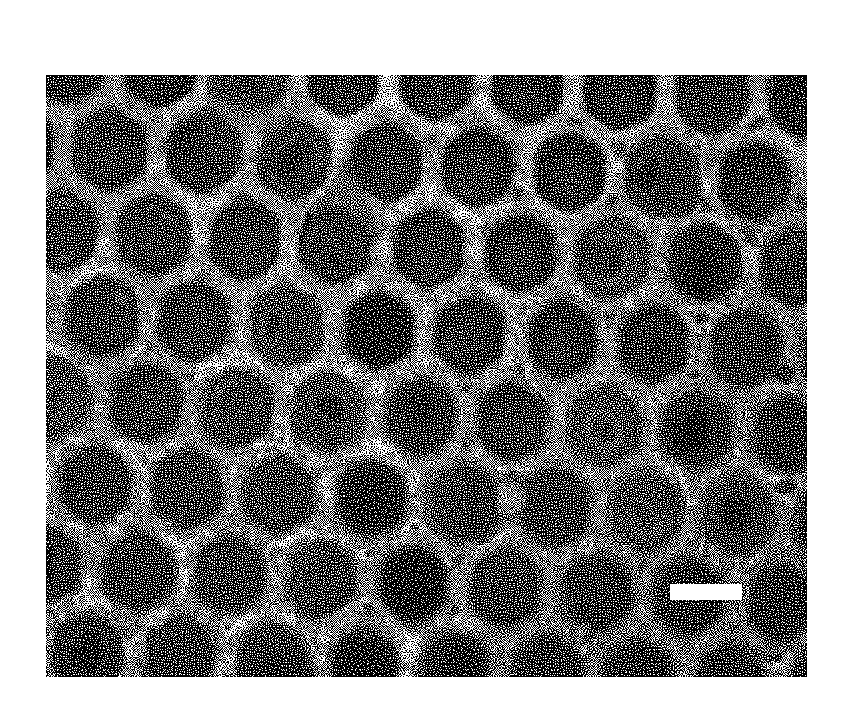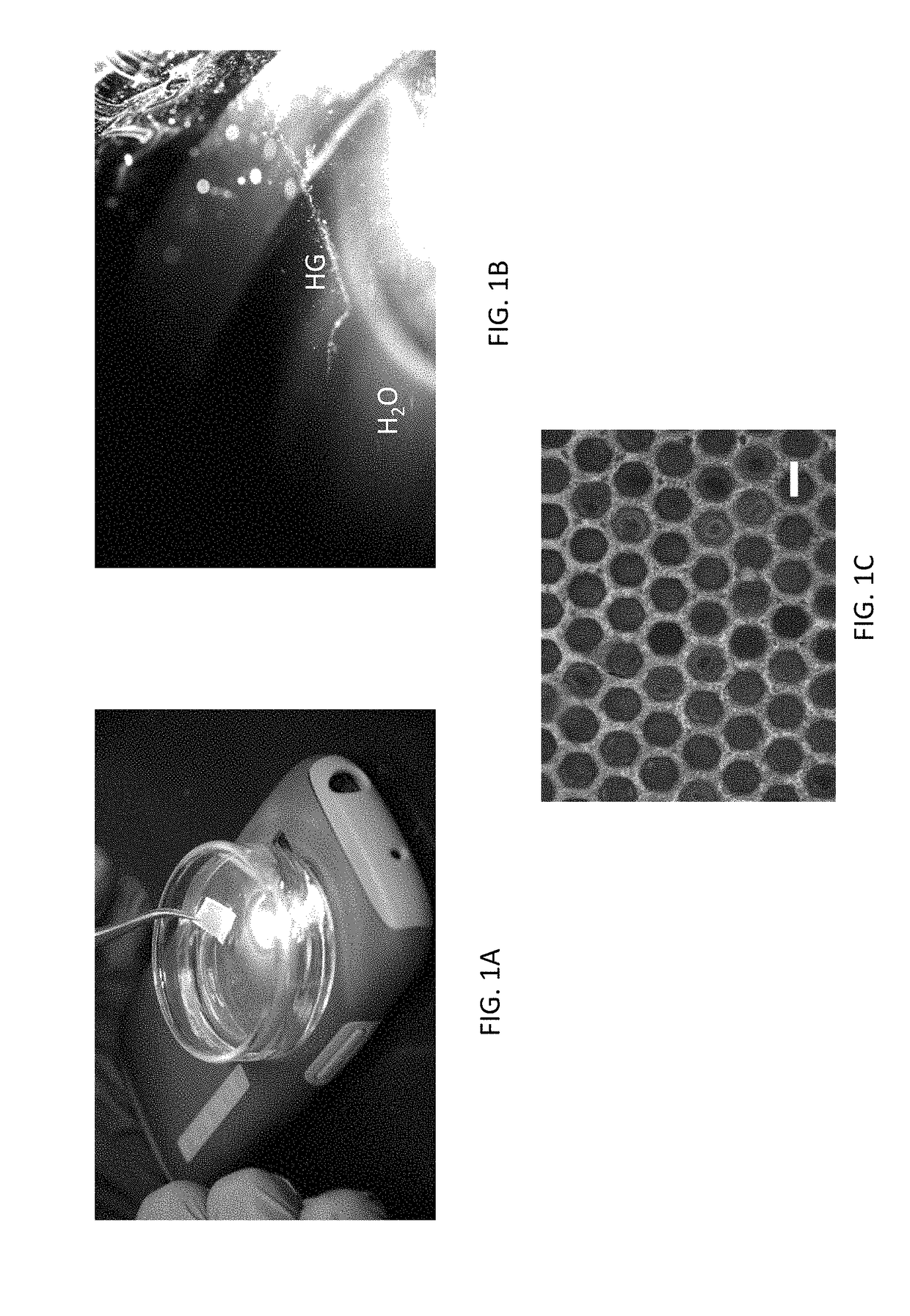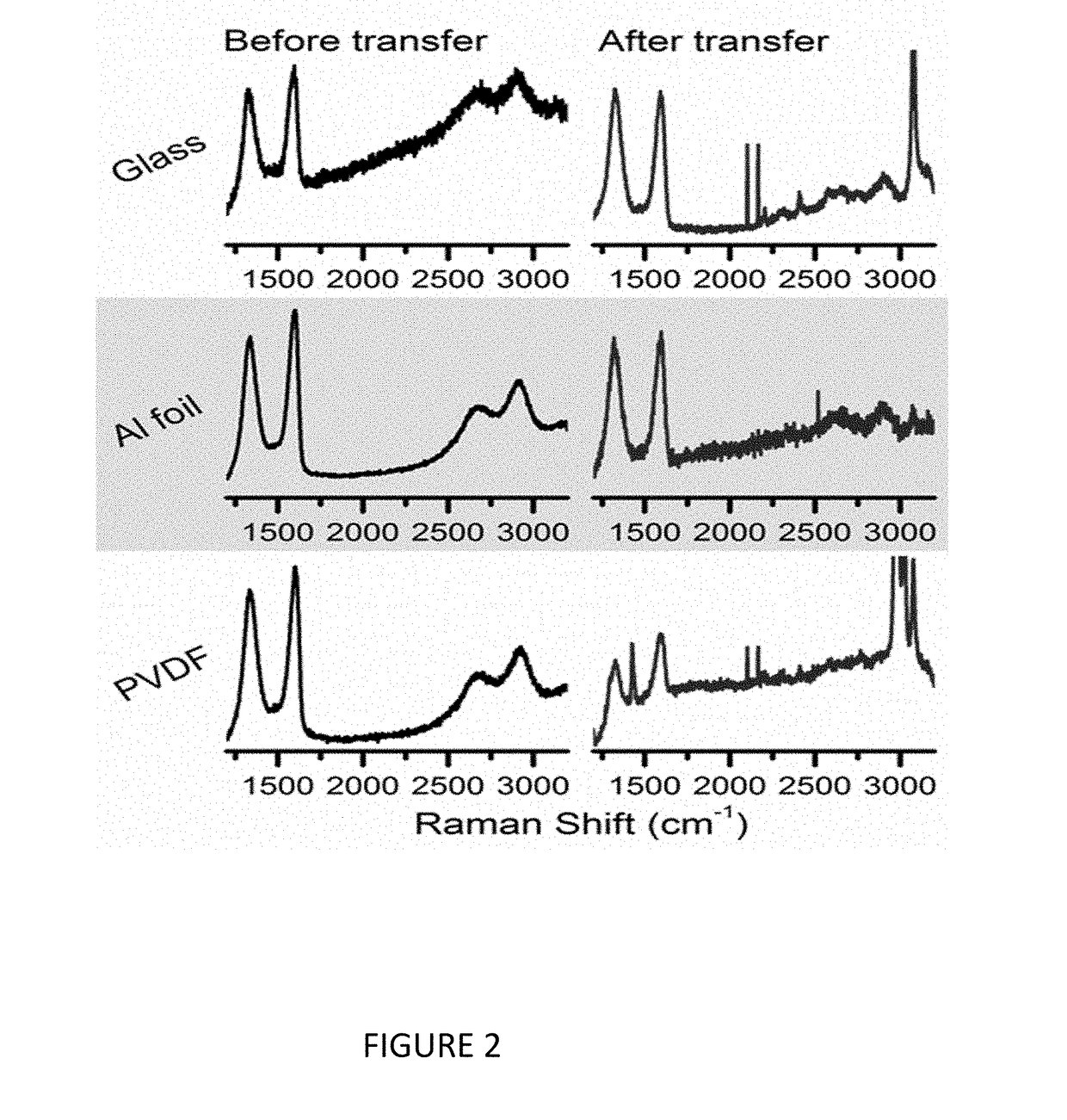Graphene surface functionality transfer
a graphene surface and functional technology, applied in the field of polymerand etchant-free method of transferring functionalized graphene, can solve the problems of affecting many properties, metal ion and polymer contaminants that are very difficult to remove, and interfere with the electromechanical properties of these highly conductive metals, and achieves a high degree of functional group retention
- Summary
- Abstract
- Description
- Claims
- Application Information
AI Technical Summary
Benefits of technology
Problems solved by technology
Method used
Image
Examples
example 1
[0022]A CVD-grown single layer graphene film on copper was transferred onto SiOx / Si or left on its native copper growth substrate. The sample was placed in a N2-flushed vessel into which 10 mL of anhydrous liquid ammonia was distilled using a dry ice bath.
[0023]Approximately 50 mL of lithium wire was added in pieces to the vessel, and the mixture was allowed to react for different durations depending on the desired degree of hydrogenation: 5 to 30 seconds for pHG, and 2 minutes for fully hydrogenated graphene.
[0024]The reaction was then quenched with a nucleofuge donor (alcohols such as methanol and ethanol donate protons, alkyl halides such as methyl iodide donate alkyl groups, and other combinations are possible) and the devices were washed with ethanol and dried under a stream of N2.
[0025]The sample was then immersed slowly at a shallow angle into a dish containing a 5% v / v solution of ethanol in water. The setup is shown in FIG. 1A. This immersion caused the hydrogenated graphen...
example 2
[0027]A further experiment involved annealing the newly transferred HG in a tube furnace at 300° C. under a 1:9 v / v mixture of H2 / Ar gas.
[0028]This step removed the hydrogen from the graphene surface, restoring pristine graphene.
example 3
[0029]In another experiment, graphene was first functionalized with p-nitrobenzene diazonium sulfate, then reduced with lithium in liquid ammonia and delaminated / relaminated as described above.
[0030]The properties of this graphene sheet were characterized using Raman spectroscopy, AFM, STEM, conductivity measurements, and energy-dispersive X-ray spectroscopy (EDX).
PUM
| Property | Measurement | Unit |
|---|---|---|
| temperature | aaaaa | aaaaa |
| temperatures | aaaaa | aaaaa |
| height image | aaaaa | aaaaa |
Abstract
Description
Claims
Application Information
 Login to View More
Login to View More - R&D
- Intellectual Property
- Life Sciences
- Materials
- Tech Scout
- Unparalleled Data Quality
- Higher Quality Content
- 60% Fewer Hallucinations
Browse by: Latest US Patents, China's latest patents, Technical Efficacy Thesaurus, Application Domain, Technology Topic, Popular Technical Reports.
© 2025 PatSnap. All rights reserved.Legal|Privacy policy|Modern Slavery Act Transparency Statement|Sitemap|About US| Contact US: help@patsnap.com



